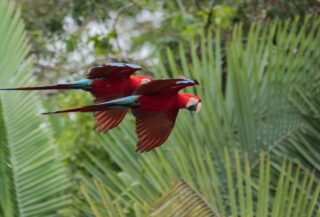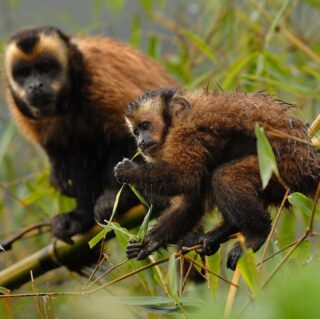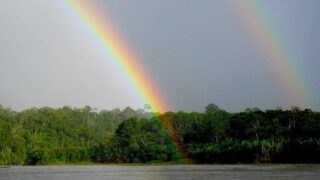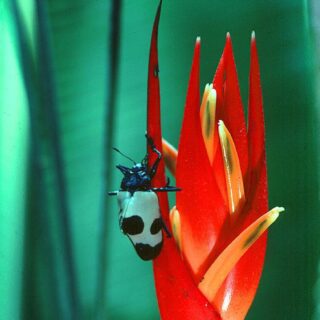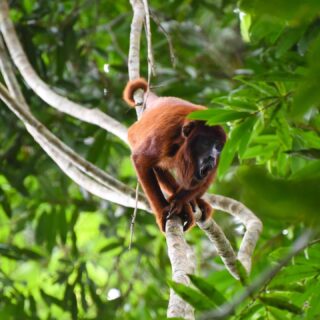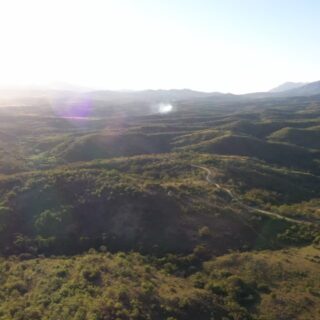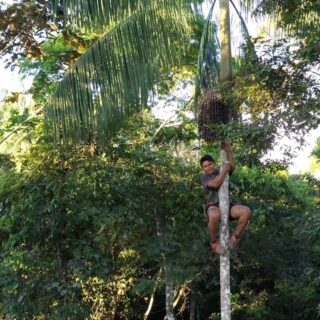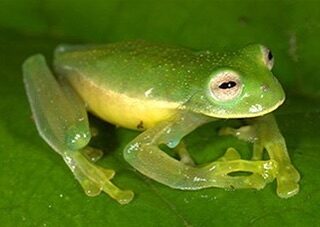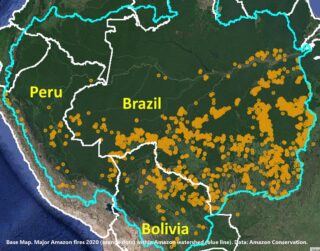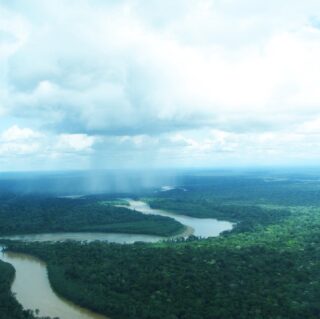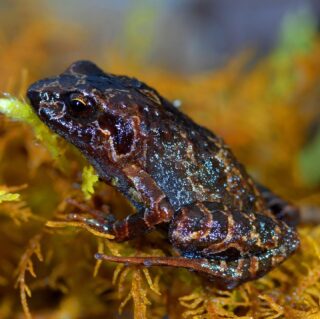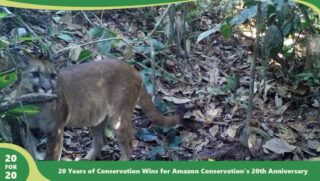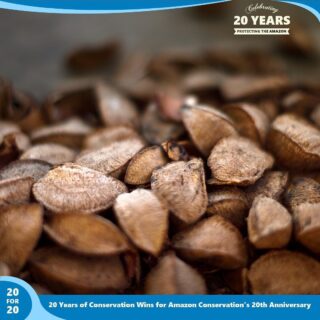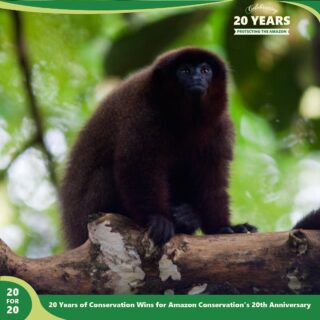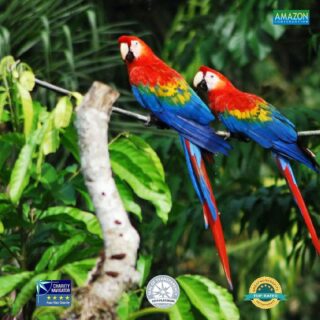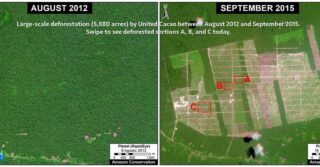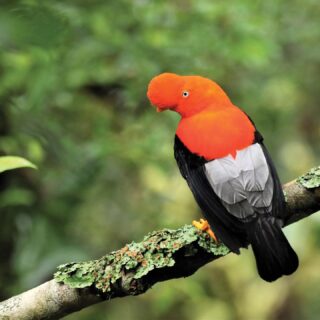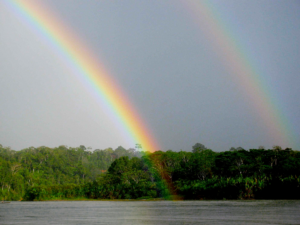
If you love our work then tell the world! Stories about us from people like you will help us make an even bigger impact in our community. At Amazon Conservation, we are dedicated to making a positive impact on the world and serving our community with unwavering commitment. We believe in transparency, accountability, and fostering trust with our supporters. That’s why we’re asking you, our valued supporters, for your help in spreading the word about our work.
GreatNonprofits is a trusted platform where people can share their experiences with nonprofits and help others discover organizations that are making a difference. The platform honors highly regarded nonprofits with their 2023 Top-Rated List. Will you help us raise visibility and credibility for our work by posting a brief story of your experience with us?
Why are reviews important?
- Trust and credibility: Positive reviews from supporters like you can build trust with potential donors, volunteers, and partners. It’s like a personal recommendation that can convince others of the authenticity and impact of our work.
- Visibility: More reviews mean better visibility on GreatNonprofits and other platforms. This increased visibility can lead to more supporters finding out about our organization, which in turn can help us raise more funds and accomplish our mission.
- Feedback and improvement: Reviews also provide us with valuable feedback. While we appreciate your support, we’re always striving to improve and do better. Honest reviews can highlight areas where we excel and where we can make improvements.
How can you help?
- Write a review: Visit our profile on GreatNonprofits and share your thoughts and experiences. Be specific about how we’ve made a positive impact on you, the community, or the planet. Your unique perspective matters.
- Spread the word: Encourage your friends, family, and colleagues who support us to write reviews as well. The more voices we have, the stronger our message becomes.
- Share on social media: If you’re comfortable, share your review on your social media channels to further amplify our cause.
- Engage with others: Engage with other reviewers and comment on their reviews. This shows that our community is active and engaged, further enhancing our credibility.
Remember that your words have the power to inspire others and drive positive change. By writing a review for us on GreatNonprofits, you’re helping us achieve our mission to ensure a thriving Amazon and a better planet for future generations.
We at Amazon Conservation are grateful for every supporter who joins us in our mission, and we look forward to reading your reviews on GreatNonprofits.

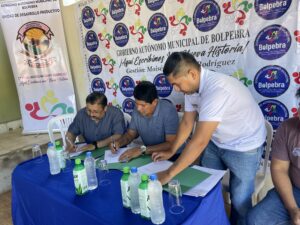
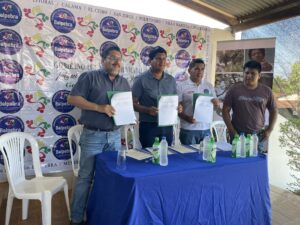 These agreements will later serve as a foundation in support of achieving, through a strategic alliance, the development of synergies for the implementation of actions, planning projects, and comprehensive management of natural resources, as well as actions aimed towards conservation in these municipalities.
These agreements will later serve as a foundation in support of achieving, through a strategic alliance, the development of synergies for the implementation of actions, planning projects, and comprehensive management of natural resources, as well as actions aimed towards conservation in these municipalities.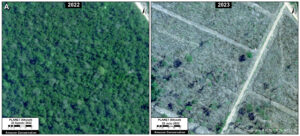
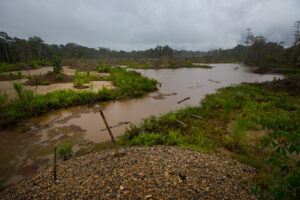 From August 24th – 26th, our Peruvian sister organization
From August 24th – 26th, our Peruvian sister organization 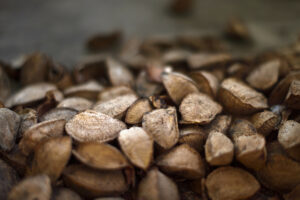 These flagship products come from the Madre de Dios region in Peru, where there is a high concentration of trees for harvesting at an economic scale. They are the only species in the global nut market whose production is not cultivated, and can only be harvested in the wild. Harvesting season is between December through March, and can be eaten raw, or toasted.
These flagship products come from the Madre de Dios region in Peru, where there is a high concentration of trees for harvesting at an economic scale. They are the only species in the global nut market whose production is not cultivated, and can only be harvested in the wild. Harvesting season is between December through March, and can be eaten raw, or toasted.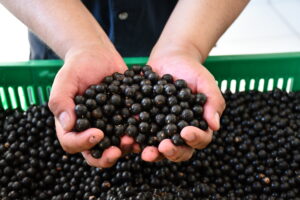 Açaí berries are produced in dense branch clusters called ‘panicles’ that contain 500 to 900 fruits each. There is also a green variety called Açaí Tinga that only grows in one Amazon estuary. Asaí Euterpre Precatoria is the species most found in the Bolivian Amazon and has a greater concentration of nutrients. These special fruits have a small window for freshness once harvested, which is why imported Açaí products are often found in powdered or frozen forms. Recently, the growth in Açaí’s popularity predicts the market for this product to reach 1.7 billion by 2028
Açaí berries are produced in dense branch clusters called ‘panicles’ that contain 500 to 900 fruits each. There is also a green variety called Açaí Tinga that only grows in one Amazon estuary. Asaí Euterpre Precatoria is the species most found in the Bolivian Amazon and has a greater concentration of nutrients. These special fruits have a small window for freshness once harvested, which is why imported Açaí products are often found in powdered or frozen forms. Recently, the growth in Açaí’s popularity predicts the market for this product to reach 1.7 billion by 2028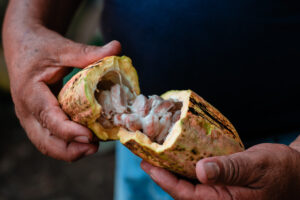 You may know Cacao as a wonderful source of chocolate, but did you know it also is one of the richest antioxidants on earth? These tropical fruits grow in altitudes of 30 – 300 m, and its trees produce roughly 70 fruits annually. There are two ‘flush’ harvesting seasons that last from October to February, and May to August. Upon harvesting, its seeds are fermented for 1-7 before being dried, roasted, and either ground to a powder or winnowed into nibs. Not only is cacao useful for consumption, but cacao trees are also considered a shade crop that provides habitat for other plants and animals.
You may know Cacao as a wonderful source of chocolate, but did you know it also is one of the richest antioxidants on earth? These tropical fruits grow in altitudes of 30 – 300 m, and its trees produce roughly 70 fruits annually. There are two ‘flush’ harvesting seasons that last from October to February, and May to August. Upon harvesting, its seeds are fermented for 1-7 before being dried, roasted, and either ground to a powder or winnowed into nibs. Not only is cacao useful for consumption, but cacao trees are also considered a shade crop that provides habitat for other plants and animals.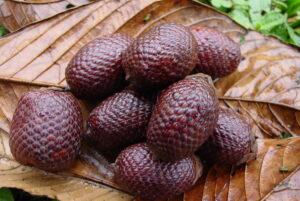 Aguaje is the fruit of the Moriche palm found throughout swamps across South America. The fruit offers a variety of flavor combinations, being sweet, salty, and mildly acidic. Some describe the taste as being similar to carrots when eaten raw. The palm goes by various names based on the country, including canangucho (Colombia), morete (Ecuador), or aguaje (Peru), and Palma Real (Bolivia).
Aguaje is the fruit of the Moriche palm found throughout swamps across South America. The fruit offers a variety of flavor combinations, being sweet, salty, and mildly acidic. Some describe the taste as being similar to carrots when eaten raw. The palm goes by various names based on the country, including canangucho (Colombia), morete (Ecuador), or aguaje (Peru), and Palma Real (Bolivia).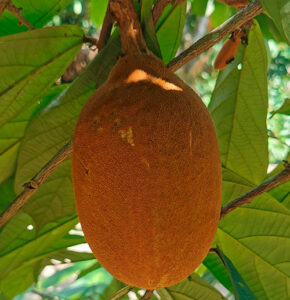 Also known as cupuaçu, Copoazú is the national fruit of Brazil. This fruit is closely related to Cacao and emits an aroma of pineapple and chocolate when opened. Many have described it as tasting similar to chocolate with notes of tropical melon flavors. The seed can also be harvested to make butter that is good for skin and hair health.
Also known as cupuaçu, Copoazú is the national fruit of Brazil. This fruit is closely related to Cacao and emits an aroma of pineapple and chocolate when opened. Many have described it as tasting similar to chocolate with notes of tropical melon flavors. The seed can also be harvested to make butter that is good for skin and hair health.